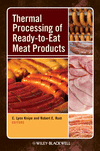Reaching Next Generation Food Shoppers Through Kid-Friendly Products
Packaged Facts projects sales for kids' food and beverage will grow to almost $30 billion by 2018

Younger children under age nine are a particularly influential demographic for food and beverage marketers. Life-long dietary habits are established during this time period and brand loyalty begins.
Today's kids are more marketing savvy and nutritionally conscious than any previous generation. They have input on the foods and beverages that their parents buy for them. And as any good marketer knows, the way to develop long-term customers is to hook them early in life.
In the report The Kids Food and Beverage Market in the U.S., 7th Edition, market research publisher Packaged Facts qualifies a food as being for kids when it has a taste kids love; nutrition kids need; or entertainment kids crave. Taste alone is not sufficient to quality a product as being for kids. The product must meet at least one other criterion—nutrition or entertainment.
Packaged Facts has based its research on seven food and beverage categories in which marketers have a strong tendency to target kids. These categories are dairy products, snacks, frozen food, beverages, cereal, shelf-stable meals, and produce.
Packaged Facts projects sales for the $25 billion kids' food and beverage will grow to a value of almost $30 billion by 2018, driven by continued economic recovery, strong new product development, and increased demand for health and wellness products suitable for growing kids. The competitive landscape surrounding the kids' food and beverage market is expected to intensify, as marketers from other consumer product goods categories will look for their share of the "family" consumer dollar. As a result, Packaged Facts projects that the kids' food and beverage market will continue to gain momentum.
Targeting the child demographic is largely accomplished through formulation, packaging, and marketing. However, kids are the end user and not necessarily the decision maker when it comes to product purchase. Therefore, marketing strategies must go beyond simple kid-appeal and focus on gaining parent approval. While kids' food and beverages are targeting the child user, the brand must first gain acceptance by the purchaser—the parent. Obtaining parent approval is most often achieved through healthy brand positioning and socially responsible efforts. Brands that have a strong alignment with health are in a good position to succeed in appealing to the parent demographic. For kids' foods, it less about diet monikers like fat, calories, and sodium, and more about marketing claims such as all natural, organic, gluten-free, and no preservatives/additives. Transforming such "healthy" offerings into fun and interactive products creates more appeal among younger demographics while still catering to parents' desires for good nutrition.
Many marketers of kids' food and beverages find ways to associate themselves with health—even if their products may not have a stellar nutritional profile. Though the product by itself may deter moms, promoting child exercise and health/wellness programs may reflect positively on the product by instilling ideas of a balanced lifestyle while providing kids with the products they want. Products that help kids achieve a healthy balance may overshadow less healthy aspects that would otherwise push moms away.
Today's kids are more marketing savvy and nutritionally conscious than any previous generation. They have input on the foods and beverages that their parents buy for them. And as any good marketer knows, the way to develop long-term customers is to hook them early in life.
In the report The Kids Food and Beverage Market in the U.S., 7th Edition, market research publisher Packaged Facts qualifies a food as being for kids when it has a taste kids love; nutrition kids need; or entertainment kids crave. Taste alone is not sufficient to quality a product as being for kids. The product must meet at least one other criterion—nutrition or entertainment.
Packaged Facts has based its research on seven food and beverage categories in which marketers have a strong tendency to target kids. These categories are dairy products, snacks, frozen food, beverages, cereal, shelf-stable meals, and produce.
Packaged Facts projects sales for the $25 billion kids' food and beverage will grow to a value of almost $30 billion by 2018, driven by continued economic recovery, strong new product development, and increased demand for health and wellness products suitable for growing kids. The competitive landscape surrounding the kids' food and beverage market is expected to intensify, as marketers from other consumer product goods categories will look for their share of the "family" consumer dollar. As a result, Packaged Facts projects that the kids' food and beverage market will continue to gain momentum.
Targeting the child demographic is largely accomplished through formulation, packaging, and marketing. However, kids are the end user and not necessarily the decision maker when it comes to product purchase. Therefore, marketing strategies must go beyond simple kid-appeal and focus on gaining parent approval. While kids' food and beverages are targeting the child user, the brand must first gain acceptance by the purchaser—the parent. Obtaining parent approval is most often achieved through healthy brand positioning and socially responsible efforts. Brands that have a strong alignment with health are in a good position to succeed in appealing to the parent demographic. For kids' foods, it less about diet monikers like fat, calories, and sodium, and more about marketing claims such as all natural, organic, gluten-free, and no preservatives/additives. Transforming such "healthy" offerings into fun and interactive products creates more appeal among younger demographics while still catering to parents' desires for good nutrition.
Many marketers of kids' food and beverages find ways to associate themselves with health—even if their products may not have a stellar nutritional profile. Though the product by itself may deter moms, promoting child exercise and health/wellness programs may reflect positively on the product by instilling ideas of a balanced lifestyle while providing kids with the products they want. Products that help kids achieve a healthy balance may overshadow less healthy aspects that would otherwise push moms away.
Looking for a reprint of this article?
From high-res PDFs to custom plaques, order your copy today!








